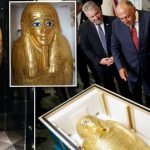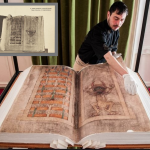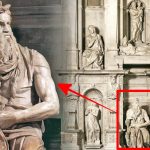Egyptian Mummy Mask of Pasyg’s majesty.

The Egyptian mummy mask of Pasyg, dating back to the 1st century BC and housed at the Neues Museum in Berlin under the catalog number AM 34436, stands as a testament to both the artistic prowess and spiritual beliefs of ancient Egypt. Crafted during the Ptolemaic period, a time marked by the fusion of Egyptian and Hellenistic cultures, the mask encapsulates the enduring fascination with the afterlife and the meticulous rituals of burial.
Pasyg, whose identity remains enigmatic yet esteemed, finds eternal expression through this exquisite artifact. Fashioned from layers of linen and plaster, the mask is a masterpiece of craftsmanship, adorned with intricate detailing and delicate applications of gold leaf. Its features, meticulously sculpted with a serene expression and eyes that seem to hold timeless secrets, evoke a sense of tranquility and spiritual continuity believed to guide the deceased into the realm of the gods.
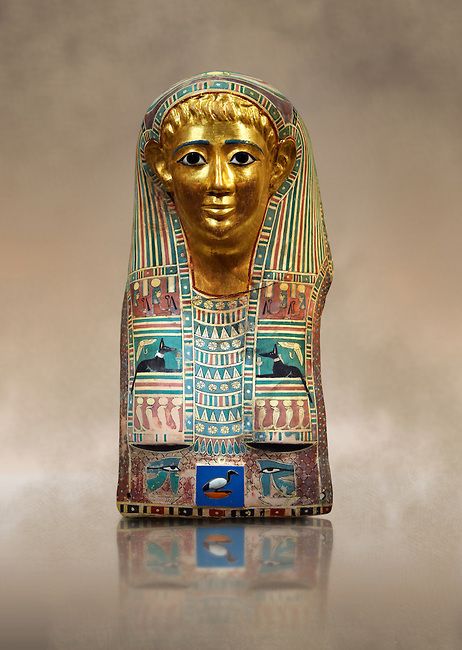
The symbolism embedded within the mask speaks volumes about ancient Egyptian beliefs. Hieroglyphs meticulously inscribed across its surface tell of Pasyg’s journey through the underworld and the rituals conducted to ensure safe passage and eternal preservation. Each detail, from the symbolic representations of gods and protective spells to the harmonious blend of traditional Egyptian iconography with Hellenistic influences, reflects the profound reverence for the deceased and the enduring quest for immortality.
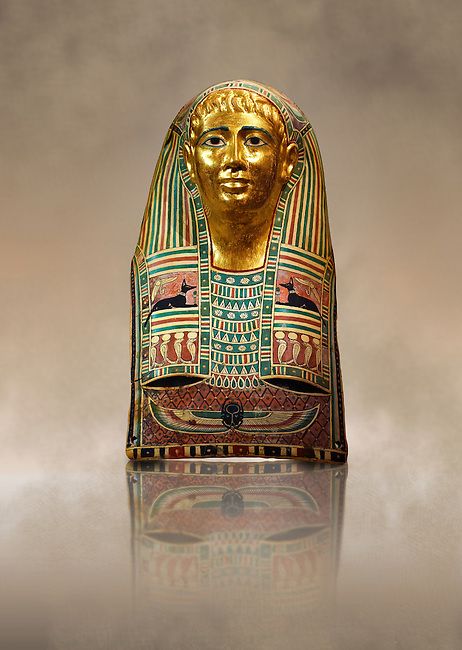
Displayed within the halls of the Neues Museum, the mummy mask of Pasyg continues to captivate scholars and visitors alike, offering a glimpse into the cultural richness and spiritual depth of ancient Egypt. Its preservation not only honors the legacy of Pasyg but also serves as a poignant reminder of the enduring quest for transcendence and the timeless allure of Egyptian artistry and belief.


